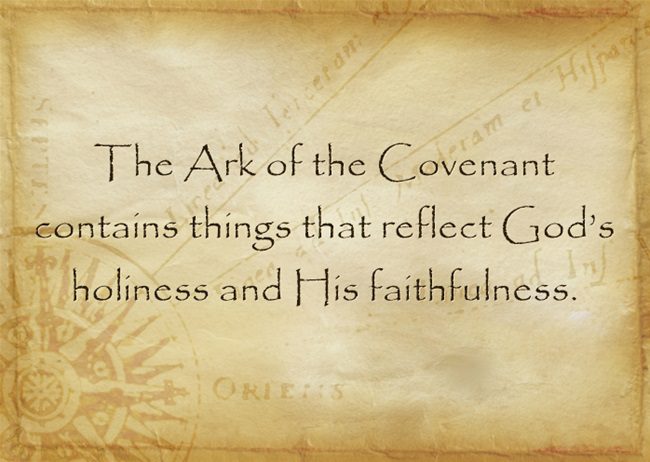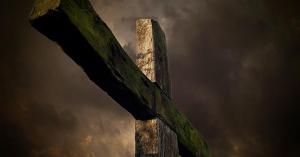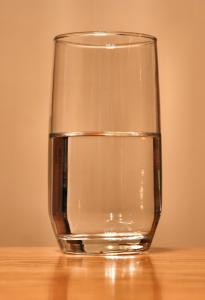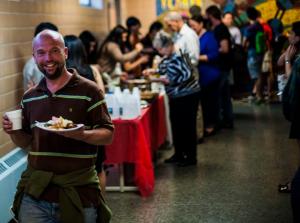Have you ever wondered what the Ark of the Covenant was? What was its purpose? Was it real? Why is it in the Bible?
The Ark’s Contents
The Ark of the Covenant contains things that reflect God’s holiness and His faithfulness. Inside of the Ark are two tablets of the Decalogue or the Ten Commandments, a pot containing manna, and Aaron’s rod which had budded. The symbolism of the tablets is that God is a holy God and requires obedience to His Law. The manna was from the days when God miraculously sustained Israel in the Wilderness and has future implication of Jesus being the Bread from Heaven, the Bread of Life (John 6:31-41), and the rod of Aaron’s that had budded and even produced almonds speaks of God’s sovereignty in His choosing leaders and that this leadership must come from God and not from man and that men do not choose themselves to be saved and placed into leadership positions but they are chosen by God. The Ark also contained the Pentateuch, the first five books of the Old Testament written by Moses. The Ark represented the presence of God and by their careful treatment and handling of the Ark, Israel had to be strict in their adherence of all that God required so that they might live (1 Sam 4:11; 2 Sam 6:7).
The Ark and God’s Presence
As I have written before, the Ark represented the presence of God because the contents reflected God’s nature and His attributes of faithfulness, holiness, and sustaining of life for those who are His own. The Ark is mentioned over 200 times in the Old Testament in 22 different designations. The Ark is sometimes referred to as the Ark of the Covenant (Joshua 3:6), the Ark of the Testimony (Ex 22:22), the Ark of Yahweh (1 Sam 4:6), the Ark of God (1 Sam 4:18) and sometimes simply the Ark (Ex 25:14) but one of the main purposes for the Ark was that of God’s being present or dwelling with His people and when the Ark was missing, so too was God’s glory. When the Philistines captured the Ark (1 Sam 4:11) the glory was said to have departed from Israel (1 Sam 4:21) but the Philistines suffered from several plagues when they had it (1 Sam 4, 5). When Israel crossed the Jordan River with the Ark the waters miraculously stopped (Joshua 3:17) and Israel was able to cross over on dry ground (Joshua 4:22). The significance of the water being stopped is that water sometimes represents God’s judgment and when God is present and a person or a nation lives in obedience to Him, the judgment of God is withheld. The many historical accounts in the Bible clearly show that the Ark of the Covenant was real and not fictitious, even though no one knows where it is today.
The Ark’s Symbolic Meaning
The Ark of the Covenant was placed behind the Holy of Holies since the Ark represented God’s presence and no one but the high priest could have access to the Holy of Holies and then, only once a year (on the Day of Atonement or Yom Kippur). Anyone that came in to contact with the Ark, besides the high priest, would instantly die since no one can see God and live (Ex 33:20). The Ark and the temple is an earthly symbol of the heavenly sanctuary. The top or lid of the Ark was appropriately called the Mercy Seat and pictured the Lamb of God by Whom we have all obtained mercy (Rom 11:30). The lid had two golden cherubim angels which protected the Holy of Holies just as a cherub angel guarded the Garden of Eden once man had fallen and prohibited them from returning to it and partaking of the Tree of Life. These two cherubim protect and magnify God’s glory. When the high priest entered the Holy of Holies on the Day of Atonement, he sprinkled blood over it representing Christ’s shed blood that would be shed for the remission of sins. At that time, it only covered the people’s sins but could never took them away (Heb 10:4-11) but when Christ shed His own blood, He took away the sins of those who trusted in Him (1 John 3:5). This was where the blood and the mercy of God (on the Mercy Seat) meet in the form of the blood of the Lamb of God, shed for us who have repented and trusted in Him. We get what we do not deserve (called mercy) while not getting what we truly do deserve (called mercy).
Christ’s Blood is God’s Mercy
In the Book of Hebrews we see how the Ark was a shadow of things to come but now the reality is here in the form of Jesus Christ Who is very God. Instead of a finite, imperfect, human high priest,
“Christ appeared as a high priest of the good things that have come, then through the greater and more perfect tent (not made with hands, that is, not of this creation) he entered once for all into the holy places, not by means of the blood of goats and calves but by means of his own blood, thus securing an eternal redemption. For if the blood of goats and bulls, and the sprinkling of defiled persons with the ashes of a heifer, sanctify for the purification of the flesh, how much more will the blood of Christ, who through the eternal Spirit offered himself without blemish to God, purify our conscience from dead works to serve the living God” (Heb 9:11-14).
Before Christ
“even the first covenant had regulations for worship and an earthly place of holiness. For a tent was prepared, the first section, in which were the lampstand and the table and the bread of the Presence. It is called the Holy Place. Behind the second curtain was a second section called the Most Holy Place, having the golden altar of incense and the Ark of the Covenant covered on all sides with gold, in which was a golden urn holding the manna, and Aaron’s staff that budded, and the tablets of the covenant. Above it were the cherubim of glory overshadowing the mercy seat. Of these things we cannot now speak in detail. These preparations having thus been made, the priests go regularly into the first section, performing their ritual duties, but into the second only the high priest goes, and he but once a year, and not without taking blood, which he offers for himself and for the unintentional sins of the people. By this the Holy Spirit indicates that the way into the holy places is not yet opened as long as the first section is still standing (which is symbolic for the present age). According to this arrangement, gifts and sacrifices are offered that cannot perfect the conscience of the worshiper, but deal only with food and drink and various washings, regulations for the body imposed until the time of reformation” (Heb 9:1-10).
Now the time of reformation has come and the Old Covenant sacrifices which could only cover sins now takes them away and we can now have Jesus’ own righteousness.
Conclusion
God had mercy on us but had no mercy on Jesus as Calvary. Jesus took the wrath of God so that we could be spared His wrath that we so rightly deserve. He who knew no sin became sin for us so that might now have Jesus’ own righteousness imputed to our account (2 Cor 5:21). He paid a debt He did not owe for a debt we could not pay. If you have not repented and trusted in Christ then you will have to pay for your own sins and since that debt can never be paid, you will spend a timeless eternity in paying for them. I plead with you to make this very day your day of salvation (2 Cor 6:2) or your day of judgment is coming (Rev 20:11-15).
Another Reading on Patheos to Check Out: What Did Jesus Really Look Like: A Look at the Bible Facts
 Article by Jack Wellman
Article by Jack Wellman
Jack Wellman is Pastor of the Mulvane Brethren church in Mulvane Kansas. Jack is also the Senior Writer at What Christians Want To Know whose mission is to equip, encourage, and energize Christians and to address questions about the believer’s daily walk with God and the Bible. You can follow Jack on Google Plus or check out his book Blind Chance or Intelligent Design available on Amazon












